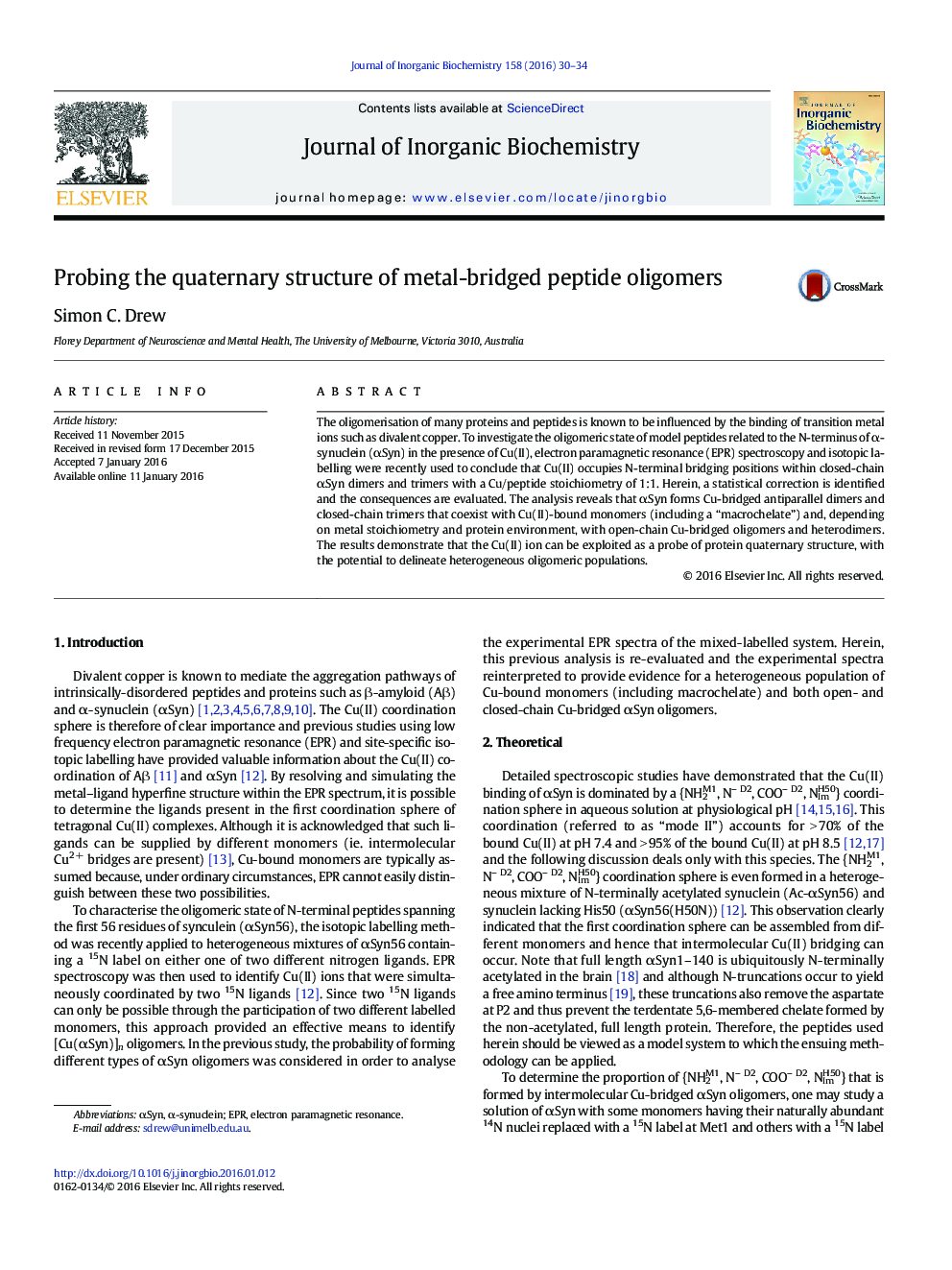| Article ID | Journal | Published Year | Pages | File Type |
|---|---|---|---|---|
| 1316834 | Journal of Inorganic Biochemistry | 2016 | 5 Pages |
•Isotopic labelling and EPR spectroscopy can detect Cu(II)-bridging phenomena.•Low-frequency EPR of isotopically labelled α-synuclein model peptide is analysed.•Macrochelate, open- and closed-chain Cu(II)-bridged dimers and trimers can be identified.•The Cu(II) ion can be exploited as a probe of quaternary oligomeric structure.
The oligomerisation of many proteins and peptides is known to be influenced by the binding of transition metal ions such as divalent copper. To investigate the oligomeric state of model peptides related to the N-terminus of α-synuclein (αSyn) in the presence of Cu(II), electron paramagnetic resonance (EPR) spectroscopy and isotopic labelling were recently used to conclude that Cu(II) occupies N-terminal bridging positions within closed-chain αSyn dimers and trimers with a Cu/peptide stoichiometry of 1:1. Herein, a statistical correction is identified and the consequences are evaluated. The analysis reveals that αSyn forms Cu-bridged antiparallel dimers and closed-chain trimers that coexist with Cu(II)-bound monomers (including a “macrochelate”) and, depending on metal stoichiometry and protein environment, with open-chain Cu-bridged oligomers and heterodimers. The results demonstrate that the Cu(II) ion can be exploited as a probe of protein quaternary structure, with the potential to delineate heterogeneous oligomeric populations.
Graphical abstractDivalent copper is known to mediate the aggregation pathways of intrinsically-disordered proteins such as α-synuclein. Using Cu(II) as a probe, EPR spectroscopy and isotopic labelling can delineate a heterogeneous population of quaternary α-synuclein structures depending on solution conditions, including a macrochelate, open/closed-chain metal-bridged oligomers and heterodimers.Figure optionsDownload full-size imageDownload as PowerPoint slide
